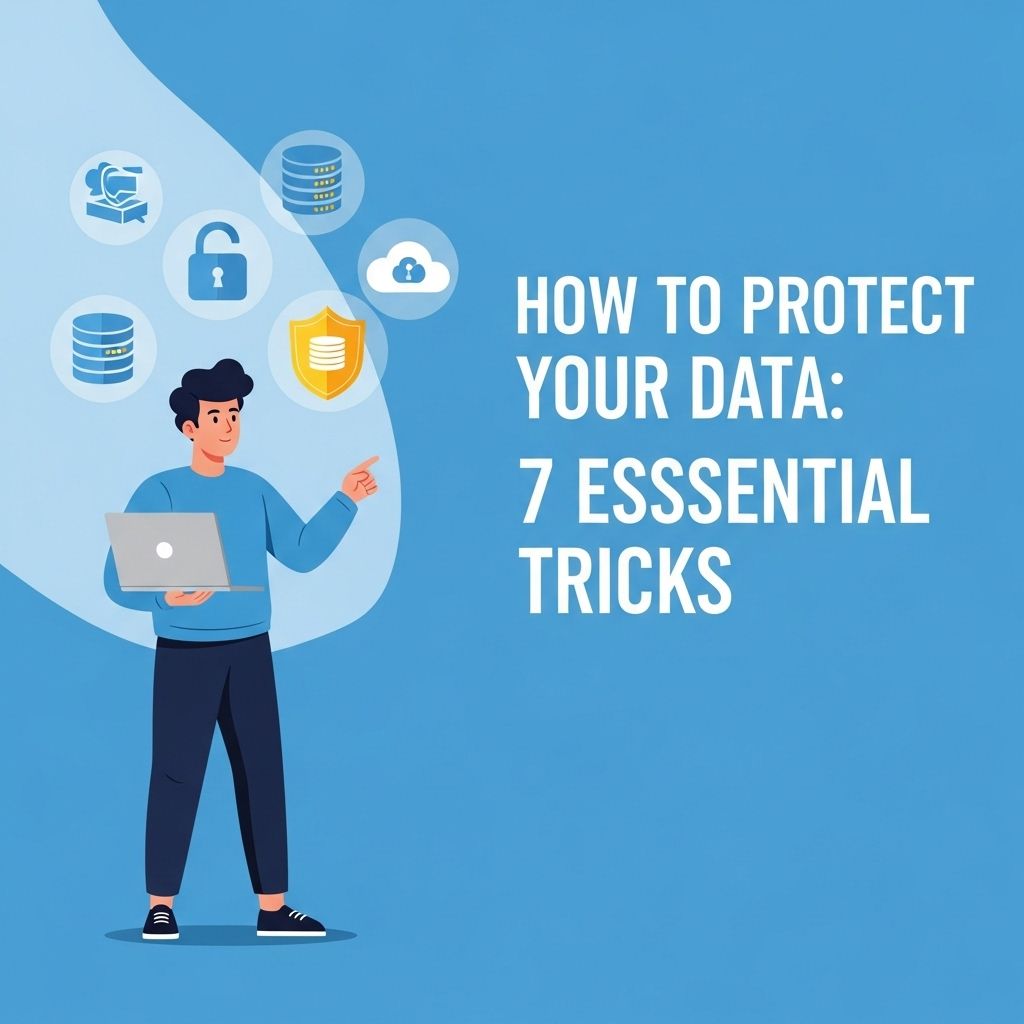In today’s digital age, protecting your data has never been more crucial. With the rise of cyber threats, data breaches, and identity theft, individuals and businesses alike must take proactive measures to safeguard their valuable information. Whether you’re storing sensitive personal data or crucial business documents, implementing effective strategies can significantly reduce your risk. In this article, we explore seven essential tricks to help you protect your data effectively.
Understanding the Importance of Data Protection
Data protection encompasses a range of strategies and practices to secure data from unauthorized access, corruption, or theft. As the amount of data generated continues to grow exponentially, the challenges associated with data protection are increasing as well. Here are some reasons why data protection is essential:
- Privacy Compliance: Regulations such as GDPR and HIPAA require organizations to protect personal information.
- Trust Building: Protecting data fosters trust among customers and clients.
- Operational Continuity: Data loss can severely disrupt business operations.
- Financial Security: The cost of a data breach can be astronomical, resulting in fines, legal fees, and loss of revenue.
1. Use Strong and Unique Passwords
Passwords are the first line of defense against unauthorized access. Here are best practices to create strong passwords:
- Use at least 12 characters, including upper and lower case letters, numbers, and symbols.
- Avoid using easily guessable information, such as birthdays or names.
- Consider using a passphrase—a sequence of words that is easy to remember but hard to guess.
- Use different passwords for different accounts to limit exposure.
Utilizing a Password Manager
A password manager can help you generate, store, and autofill strong passwords across your devices, making password management easier and more secure.
2. Enable Two-Factor Authentication (2FA)
Two-factor authentication adds an additional layer of security. It requires not only a password but also something the user has, such as a mobile device. Here’s how to enable 2FA:
- Check if your accounts support 2FA.
- Choose your second factor (e.g., SMS code, authenticator app).
- Follow the instructions to set it up on your accounts.
3. Regularly Update Software and Hardware
Keeping software and firmware up to date is critical in minimizing vulnerabilities. Consider the following:
| Component | Action | Frequency |
|---|---|---|
| Operating System | Install updates | Monthly |
| Applications | Update to latest versions | Bi-weekly |
| Antivirus Programs | Update definitions | Weekly |
| Routers/Firmware | Upgrade firmware | Quarterly |
4. Backup Your Data Regularly
Regular backups ensure that you can restore your data in case of loss or theft. Follow these steps for effective data backup:
- Choose an appropriate backup solution (cloud storage vs. external hard drives).
- Determine the frequency of backups based on how critical the data is.
- Test your backup system to ensure data can be restored.
Backup Strategies
Consider the 3-2-1 rule: Keep three copies of your data, on two different media, and one off-site.
5. Be Wary of Phishing Attacks
Phishing attacks trick users into revealing sensitive information. To protect against phishing:
- Always verify the sender’s email address and look for spelling errors.
- Avoid clicking on suspicious links or downloading attachments from unknown sources.
- Use browser extensions that help identify phishing sites.
6. Secure Your Wi-Fi Network
Your Wi-Fi network can be an entry point for attackers. Here’s how to secure it:
- Change the default username and password for your router.
- Use WPA3 encryption, if available.
- Disable remote management features.
- Regularly check connected devices and remove any that seem suspicious.
7. Monitor Your Accounts and Credit
Keeping an eye on your financial accounts can help detect unauthorized transactions early. Here are some monitoring tips:
- Review bank and credit card statements regularly.
- Use credit monitoring services to receive alerts about changes in your credit report.
- Be proactive in addressing any suspicious activity.
Conclusion
In conclusion, protecting your data requires a multi-faceted approach that combines technical solutions with user awareness. By implementing these seven essential tricks, you can significantly reduce the risk of data breaches and ensure that your personal and business information remains secure. Remember, data protection is an ongoing process, and staying informed about new threats is crucial in maintaining your cybersecurity posture.
FAQ
What are the best practices to protect my personal data?
Utilize strong, unique passwords, enable two-factor authentication, and regularly update your software to safeguard your personal data.
How can I secure my data on public Wi-Fi?
Use a Virtual Private Network (VPN) to encrypt your internet connection and avoid accessing sensitive information when connected to public Wi-Fi.
What steps should I take to back up my data?
Regularly back up your data using cloud storage or external hard drives, ensuring that you have multiple copies in different locations.
How can I recognize phishing attempts?
Be cautious of unexpected emails or messages that ask for personal information, and always verify the sender’s identity before clicking on links.
What tools can help me protect my data?
Consider using antivirus software, firewalls, and encryption tools to enhance your data security.
Why is it important to update my software regularly?
Regular updates patch security vulnerabilities, helping to protect your data from potential threats and cyberattacks.




